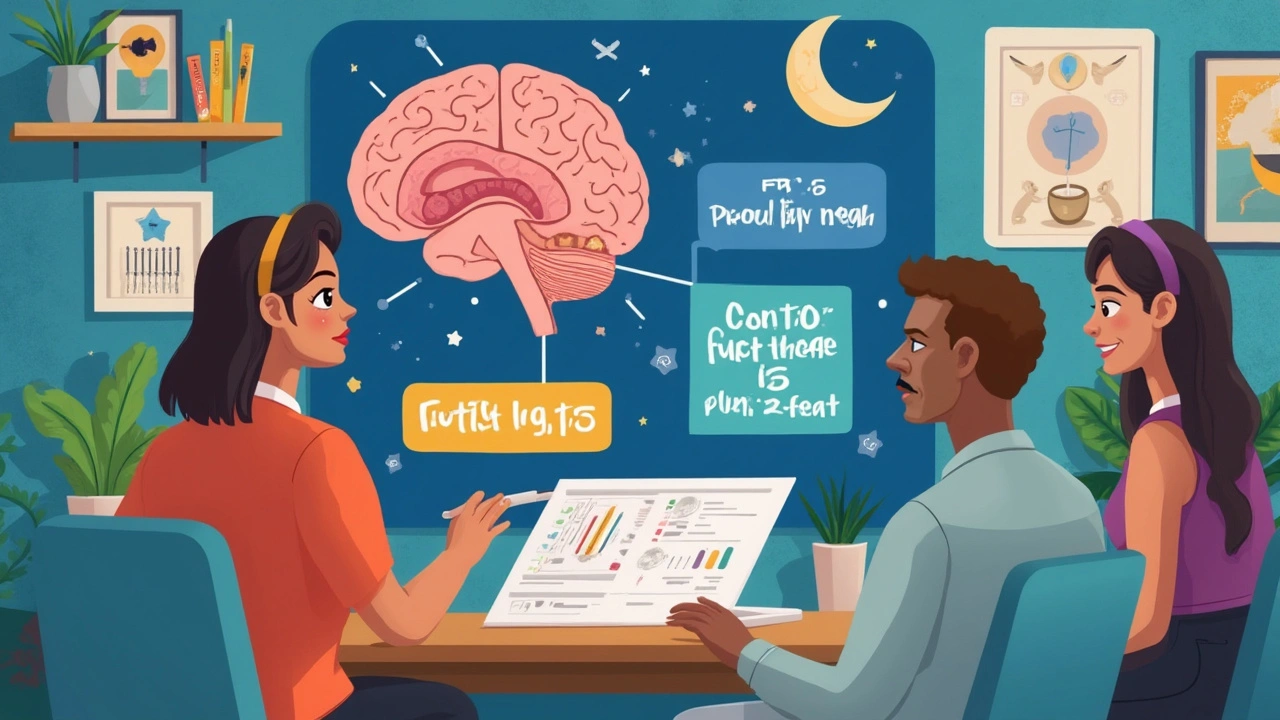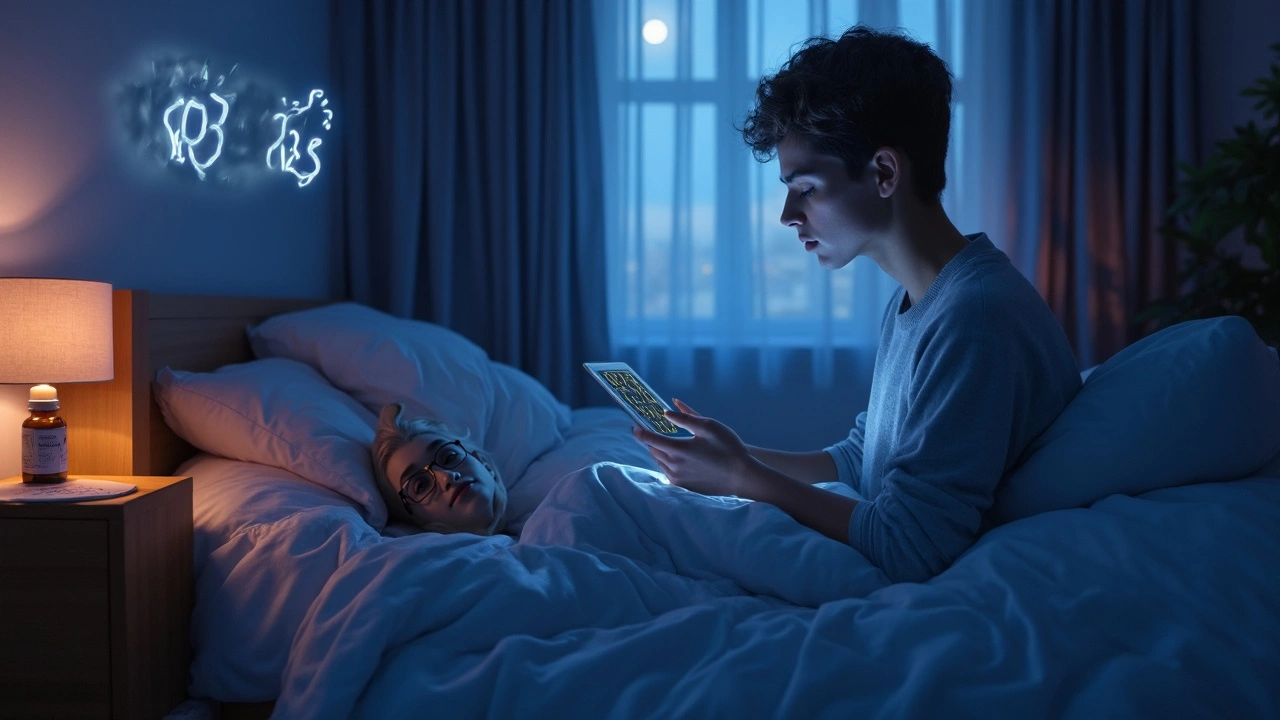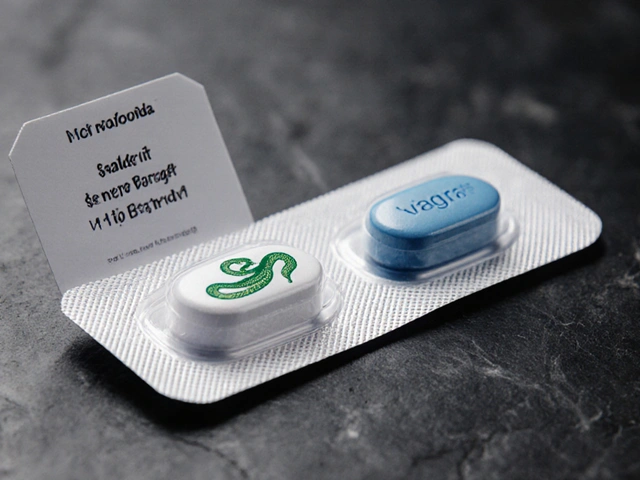Ever stayed up staring at the ceiling, waiting desperately for sleep to come? That’s me, texting my best friend at midnight, fighting to resist scrolling through just one more reel. Now, imagine there’s a substance in your brain that can tip the scales, nudging you gently into dreamland. That’s melatonin—a naturally occurring hormone, but one that’s turned into a superstar of sleep supplements. People pop it before long flights, splash it in their tea, even slide it under their children’s pillows. But does it really work? And how safe is it, especially for kids or anyone who needs more than just an occasional sleep reset?
How Melatonin Works and What Science Says About Sleep
Melatonin isn’t a fairy dust for sleep, though sometimes you wish it was. Your body makes melatonin in the pineal gland, which is nestled in your brain—simple biology. When bedtime inches closer and light begins to fade, your brain cranks up melatonin production. It’s like flipping the switch from “alert and active” to “getting sleepy.” This internal clock is called your circadian rhythm, a 24-hour cycle that’s surprisingly sensitive to darkness and light. For most people, melatonin rises at night and drops when the sun comes up. That’s why working night shifts or staring at bright screens wrecks your sleep—artificial light tells your brain to put the brakes on melatonin.
Here’s something interesting: melatonin doesn’t “knock you out.” It’s not like taking a sleeping pill. Think of it as your body’s internal setting to start winding down, like when you dim the lights and put away your phone. Melatonin prepares your system to rest, but you still have to cooperate—good sleep hygiene still matters. The real magic? Melatonin levels in adults naturally peak in the late evening, usually around 2 to 4 a.m., and then drop off.
A study published by the National Institutes of Health in 2023 showed that people with disrupted sleep (like jet lag, shift work, or certain disorders) benefit most from melatonin supplements. But for classic insomnia, the effect is small—on average, people fell asleep 7 minutes faster and slept 8 minutes longer. That’s helpful if you’re desperate, but it won’t fix deep-seated sleep problems. In children, melatonin can help those with specific needs (like ADHD or autism), but the science still says: don’t use it lightly.
There’s also a lot of talk about how much melatonin is actually in your “3 mg” or “10 mg” bottle. A 2017 investigation by researchers at the University of Guelph tested 31 brands and found that actual content ranged from -83% to +478% of what the label claimed. Seriously, that’s wild. So you might be swallowing much more—or much less—than you think. It’s worth checking brands third-party approved by groups like USP or NSF.
If you love stats, here’s a quick look at melatonin facts:
| Interesting Fact | Data |
|---|---|
| Typical adult dosage range | 0.5 mg to 5 mg |
| U.S. melatonin sales in 2023 | $1.5 billion |
| Percentage of U.S. adults using melatonin (2023) | ~14.5% |
| Reported variance in melatonin content (brands tested) | Up to 478% more than label |
| Average decrease in time to fall asleep (clinical studies) | 7 minutes |
| Peak blood levels after oral dose | 20–120 minutes |
| Children using melatonin regularly in U.S. | Up to 6% |
If I ask Rowan, my own little night owl, he’d tell you he’s pretty sure melatonin means an extra bedtime story. For adults, though, it’s anything but a simple fix.

Melatonin Supplements: Safety, Dosage, and When (Not) to Use
Head to the pharmacy, and melatonin comes in every flavor and format—gummies, tablets, sprays, even drink mixes. But it’s the only non-prescription hormone you can buy in the U.S., which is why experts keep sounding the alarm. Unlike prescription meds, the FDA doesn’t tightly regulate melatonin. That means your bottle could have five times the listed dose, or maybe just sugar inside. And when you overshoot on hormones, things can get messy fast—especially for kids or teens whose own sleep-wake cycles are already changing.
Dosage is where things get tricky. The best dose is usually the lowest one that makes a difference. Most experts suggest starting with 0.5 to 1 mg about 30-60 minutes before your target bedtime. You can go up to 3 mg for adults, sometimes higher if a doctor says so—but jumping to 10 mg just because you want instant sleep isn’t smart. Higher doses are linked to vivid dreams, grogginess, even feeling extra anxious. Kids—well, it’s even more delicate. The American Academy of Pediatrics suggests 1–3 mg maximum, only for specific issues, and only short-term.
Let’s get blunt about side effects. Most people tolerate low-dose melatonin just fine, but some run into headaches, stomachaches, dizziness, daytime sleepiness, or night terrors (Rowan once had vivid dreams that freaked him out for days). And here’s a weird one: melatonin can actually mess up your mood or your period if you use it long-term. There’s some talk about how it could interact with blood thinners, diabetes meds, or even birth control. So run it by your doctor if you take anything serious.
One really big debate is whether melatonin can mess with puberty in kids. So far, the evidence isn’t clear, but most pediatricians say don’t take the risk unless it’s really needed—and never as a daily crutch. We use it with Rowan maybe once every two months, if she’s super thrown off by vacation or illness. Graham, my partner, tried it to battle jet lag; he said it took the edge off but still needed blackout curtains and a no-phone-in-bed policy to really work.
- Tip: Always buy melatonin from brands with third-party testing. Look for the USP or NSF symbol.
- Avoid "sleepytime" gummies loaded with sugar—your dentist will thank you later.
- If you’re on meds or have a health condition, double-check with your doctor first. Melatonin interacts with more stuff than you’d think.
- After taking melatonin, keep your bedroom dimly lit or dark—light kills the effect.
Probably the most underestimated truth? Melatonin can help, but it’s useless if you don’t fix your environment. That means chilling the room, keeping it dark, skipping screens, and sticking to a wind-down routine. For my family, we swear by blackout curtains and a "no screens after 9" rule—not always fun, but it definitely stacks the sleep deck in your favor.

Melatonin Beyond Sleep: Daylight, Jet Lag, and the Surprising Stuff
Okay, sleep gets all the attention, but melatonin is sneaky—it's doing more in your body than you may think. Researchers are digging into how it works with your immune system, maybe even fighting inflammation or oxidative stress. A few studies are looking at melatonin in cancer support, migraines, and seasonal depression, but you won’t find doctors recommending it yet without more proof. The sleep link is still the clearest path.
Travelers swear by melatonin for resetting their clocks. If you’re heading across two or more time zones, the secret sauce is using melatonin at the "new" bedtime for the first few days of your trip. Studies show it really does help fight jet lag—jet pilots and cabin crews use it, especially on ultra-long hauls to Europe or Asia. Take it at the same time each night in your destination, and keep light exposure in mind: soak up sun in the morning, block it at night. Your internal clock will adjust twice as fast.
What about daylight? Light is melatonin’s best friend and worst enemy. Get morning sunlight as soon as you wake up, even if the sky is gray. It’s the most natural way to shut down nighttime melatonin production. Then, in the evening, bring in the routines—dimming lights, warm showers, soft pajamas—so your brain gets every signal it needs. Don’t believe anyone who tells you melatonin works "no matter what." State of mind, environment, and routine all play massive roles.
Here are a few things you might not know:
- In some countries, melatonin is prescription-only. The U.S. is actually the wild west of melatonin supplements.
- Melatonin is present in food—tart cherries, bananas, oats, and even some nuts—but not enough to knock you out. Still, eating a balanced diet can support your body’s own production.
- Long-term use in adults hasn’t shown scary side effects in studies up to two years, but almost nobody studies what happens past that.
- A big Swedish study in 2022 found that people over 60 with chronic insomnia did get better quality sleep with daily melatonin—especially if paired with behavioral therapy.
- Melatonin can shift your entire sleep schedule in kids with rare disorders, but it needs close medical supervision.
Finally, a little myth-busting: More isn’t better. Jumping from 1 mg to 10 mg won’t turn you into Sleeping Beauty, and there’s a real risk of “overdosing” which just means unpredictable side effects, brutal morning brain fog, and you stuck on a never-ending sleep aid loop. Give yourself a week to experiment with timing and dose, and check if sleep gets easier without chasing higher and higher milligram counts. Trust me, the best magic is getting your brain to do the work itself. Melatonin can help, but only if you treat it like a nudge—not a cure.







Vivian Quinones
June 27, 2025I don't care what science says, melatonin is just another Big Pharma scam to make us dependent. We used to sleep just fine before they turned sleep into a product you gotta buy. America's got it backwards-we're not broken, we're just lazy.